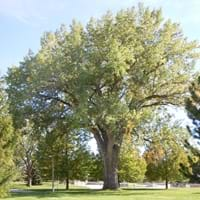Life Span
Perennial
Perennial
Origin
China
Northeastern United States, Mid-Atlantic United States, Southeastern United States, Central United States, Canada, Mexico
Types
Actinidia deliciosa chlorocarpa, Actinidia deliciosa deliciosa
Plains Cottonwood, Rio Grande cottonwood
Habitat
Mountain forests
bottomlands, Floodplain, Hardwood forests, Riverbanks
USDA Hardiness Zone
6-9
3-9
Sunset Zone
4, 5, 6, 7, 8, 9, 12, 14, 15, 16, 17, 18, 19, 20, 21, 22, 23, 24
1a, 1b, 2a, 2b, 3a, 3b, 4, 5, 6, 7, 8, 9, 10, 11, 14, 15, 16, 17, 18, 19, 20, 21
Habit
Vining/Climbing
Upright/Erect
Minimum Width
Not Available
Flower Color
Light Yellow, Ivory
Red, Green
Flower Color Modifier
Bicolor
Bicolor
Fruit Color
Tan, Brown
White
Leaf Color in Spring
Green, Light Green
Green, Gray
Leaf Color in Summer
Green
Green
Leaf Color in Fall
Light Green, Yellow green
Yellow
Leaf Color in Winter
Light Green
Not Available
Leaf Shape
Heart-shaped
Toothed curved and flat petiole
Plant Season
Spring, Summer, Fall
Summer, Fall
Sunlight
Full Sun, Partial Sun
Full Sun
Growth Rate
Fast
Very Fast
Type of Soil
Clay, Loam
Loam, Sand
The pH of Soil
Acidic, Neutral
Acidic, Neutral
Soil Drainage
Average
Average
Bloom Time
Late Spring, Early Summer
Early Spring
Tolerances
Drought
Drought, Soil Compaction, Wet Site
Where to Plant?
Ground
Ground
How to Plant?
Layering, Softwood cuttings
Seedlings, Stem Planting
Plant Maintenance
Medium
Low
Watering Requirements
Water daily during growing season
Keep ground moist, Requires regular watering, Requires watering in the growing season, Water daily during growing season, Water Deeply, Water more in summer
In Summer
Lots of watering
Ample Water
In Spring
Moderate
Ample Water
In Winter
Average Water
Average Water
Soil pH
Acidic, Neutral
Acidic, Neutral
Soil Type
Clay, Loam
Loam, Sand
Soil Drainage Capacity
Average
Average
Sun Exposure
Full Sun, Partial Sun
Full Sun
Pruning
Prune for shortening long shoots, Prune in early summer, Prune in late winter
Remove dead branches, Remove hanging branches
Fertilizers
Self-fertile
fertilize in growing season, Nitrogen
Pests and Diseases
Armillaria root rot, Armored scales, Bleeding canker, Botrytis Blight, Crown gall, Nematodes, Phytophthora Root Rot, Red blotch
Aphids, Borers, Caterpillars, Insects
Plant Tolerance
Drought
Drought, Soil Compaction, Wet Site
Flower Petal Number
Single
Not Available
Foliage Texture
Medium
Medium
Foliage Sheen
Matte
Glossy
Attracts
Not Available
Not Available
Allergy
Inflammation, Mouth itching, Throat itching
Hay fever, Headache, Runny nose, sneezing
Aesthetic Uses
Not Used For Aesthetic Purpose
Landscape Designing
Beauty Benefits
Beautiful Skin, Protects from sun damage
No Beauty Benefits
Environmental Uses
Air purification
Air purification, Forms dense stands, Prevent Soil Erosion, Shadow Tree, Shelter for wildlife, Wildlife, Windbreak
Medicinal Uses
constipation, Heart problems, Low Blood Pressure
Anodyne, Anthelmintic, anti-inflammatory, Febrifuge
Part of Plant Used
Fruits
Inner Bark, Leaves, Seeds
Other Uses
Used As Food, Used for its medicinal properties
Biomass for fuel, Used as firewood, Used As Food
Used As Indoor Plant
No
No
Used As Outdoor Plant
Yes
Yes
Garden Design
Edible, Fruit / Fruit Tree, Rock Garden / Wall, Vine
Screening / Wind Break, Shade Trees
Botanical Name
ACTINIDIA deliciosa
POPULUS deltoides
Common Name
Chinese Gooseberry, Fuzzy Kiwi, Kiwi
Eastern Cottonwood
In Hindi
कीवी फल
Eastern Cottonwood
In German
Kiwi, Chinesischer Strahlengriffel
Eastern Cottonwood
In French
Kiwi, Groseille de Chine, Yang Tao, Souris végétale
Cottonwood Orient
In Spanish
kiwi, kivi, actinidia
Cottonwood del Este
In Greek
Ακτινίδια
Ανατολική Cottonwood
In Portuguese
Quiuí
Cottonwood Oriental
In Polish
Owoc kiwi
Eastern Cottonwood
In Latin
Kiwi fructum
Orientalium Poplar
Phylum
Magnoliophyta
Anthophyta
Class
Magnoliopsida
Dicotyledonae
Family
Actinidiaceae
Salicaceae
Clade
Angiosperms, Asterids, Eudicots
Angiosperms, Eudicots, Rosids
Tribe
Not Available
Not Available
Subfamily
Not Available
Salicoideae
Importance of Kiwifruit and Eastern Cottonwood
Want to have the most appropriate plant for your garden? You might want to know the importance of Kiwifruit and Eastern Cottonwood. Basically, these two plants vary in many aspects. Compare Kiwifruit and Eastern Cottonwood as they differ in many characteristics such as their life, care, benefits, facts, etc. Every gardener must at least have the slightest clue about the plants he wants to plant in his garden. Compare their benefits, which differ in many ways like facts and uses. The medicinal use of Kiwifruit is constipation, Heart problems and Low Blood Pressure whereas of Eastern Cottonwood is Anodyne, Anthelmintic, anti-inflammatory and Febrifuge. Kiwifruit has beauty benefits as follows: Beautiful Skin and Protects from sun damage while Eastern Cottonwood has beauty benefits as follows: Beautiful Skin and Protects from sun damage.
Compare Facts of Kiwifruit vs Eastern Cottonwood
How to choose the best garden plant for your garden depending upon its facts? Here garden plant comparison will help you to solve this query. Compare the facts of Kiwifruit vs Eastern Cottonwood and know which one to choose. As garden plants have benefits and other uses, allergy is also a major drawback of plants for some people. Allergic reactions of Kiwifruit are Inflammation, Mouth itching and Throat itching whereas of Eastern Cottonwood have Hay fever, Headache, Runny nose and sneezing respectively. Having a fruit bearing plant in your garden can be a plus point of your garden. Kiwifruit has no showy fruits and Eastern Cottonwood has no showy fruits. Also Kiwifruit is not flowering and Eastern Cottonwood is not flowering . You can compare Kiwifruit and Eastern Cottonwood facts and facts of other plants too.





